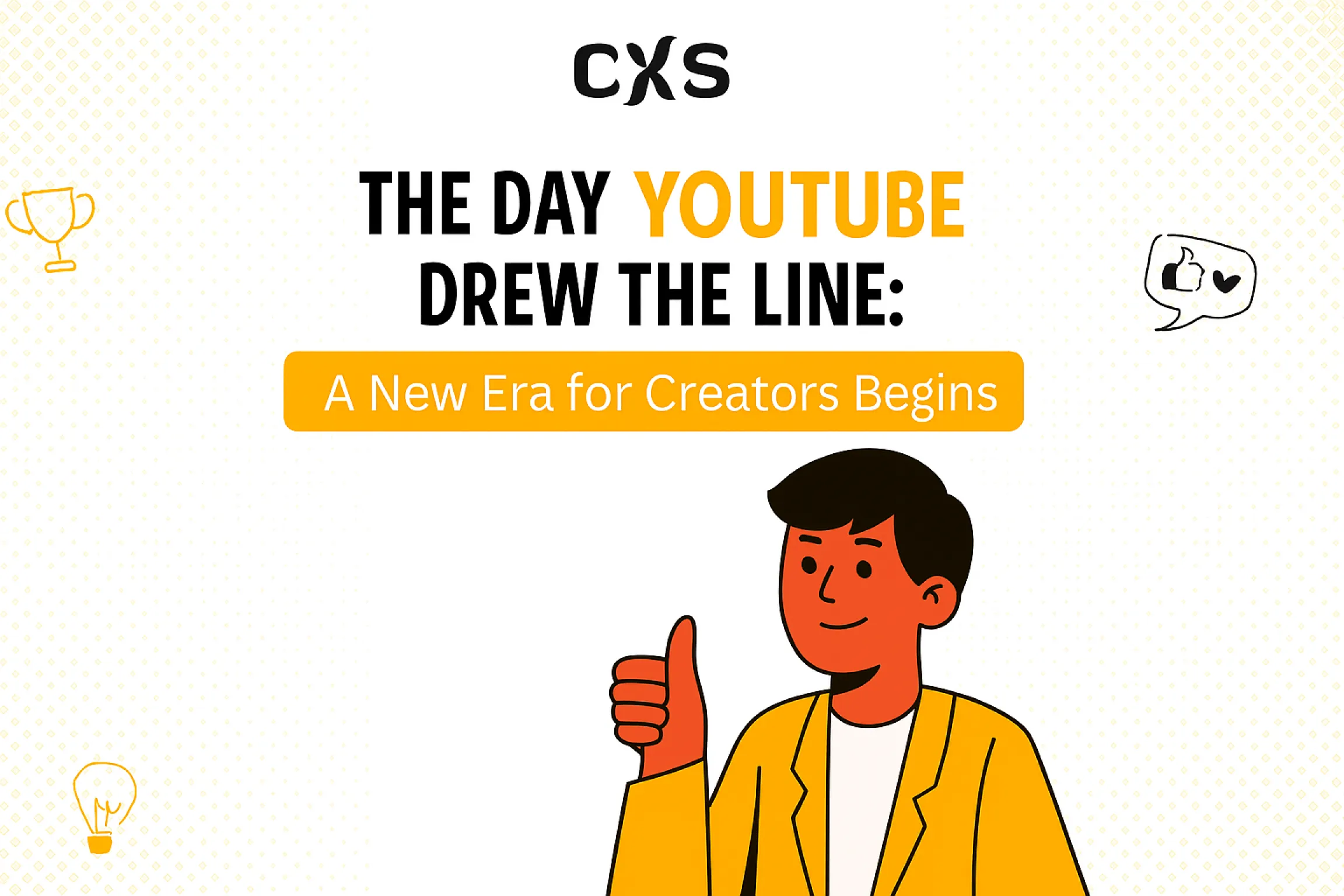The Day YouTube Drew the Line: A New Era for Creators Begins
By July 14, 2025, the YouTube creator world was buzzing — and not in the good way.
Something had shifted.
A quiet policy update was rippling through forums, Discords, and creator groups. YouTube had just announced a revision to its monetization policy — but unlike past tweaks, this one struck right at the heart of how many creators had built their channels: AI voiceovers, template content, and quick edits were no longer enough.
It All Started with “AI Slop”...
Over the past year, a new kind of video had started to flood the platform. Entire channels popped up seemingly overnight — churning out videos with robotic voices, auto-generated images, and barely any human touch. They were fast, cheap, and algorithm-friendly.
YouTube noticed. And so did viewers.
While some creators saw it as innovation, others saw it as dilution — and advertisers began asking questions. “Is this really where our ads should go?” That’s when YouTube made its move.
The Policy Nobody Saw Coming
Starting July 15, 2025, YouTube is enforcing a clarified version of its YouTube Partner Program (YPP) policy. The new term? “Inauthentic Content.”
It replaces the vague old label of “repetitious content,” offering sharper rules on what’s allowed — and what’s not — when it comes to monetization.
If your channel relies on:
- Reused clips with minimal commentary,
- Templated content made in bulk,
- Text-to-speech narrations with no personalization,
- Barebones visuals or slideshows with no transformation…
Your videos may no longer be eligible for monetization.
Creators React: Confusion, Frustration — and Clarity
At first, many panicked.
“I thought using AI to generate scripts was allowed,” said one tech YouTuber in a private forum. “Now I’m wondering if half my content will get flagged.”
YouTube was quick to reassure: this isn’t a ban on AI. It’s a call for quality.
Using AI to assist your creative process? Totally fine. But uploading cookie-cutter videos made by a machine with no added value? That’s where the line is drawn.
As YouTube Editorial Head Rene Ritchie put it:
“YouTube is not against AI. It’s against inauthenticity.”
The Real Message: Human Creativity Matters
This policy shift isn’t just a crackdown — it’s a message:
👉 “We want real voices. Real creators. Real value.”
YouTube wants to keep its platform meaningful, especially for viewers and advertisers. And that means rewarding creators who transform, not just repeat.
So if you’re a reaction channel? Add real commentary.
If you cover news? Offer insights.
If you use stock footage? Weave it into a compelling story.
Your audience — and YouTube — need to see your fingerprint.
What You Should Do Now
If you’re a YouTube creator, here’s your action plan:
- Audit Your Content: Ask yourself — do your videos offer something only you can bring?
- Diversify Your Format: Use AI, but wrap it in your personality, voice, or unique perspective.
- Embrace Storytelling: The more your videos feel like you — not a bot — the better your chances of staying monetized.
- Watch the Details: Minimal edits, repetitive scripts, or “set-it-and-forget-it” uploads are red flags now.
The Future of YouTube is Human-First
This July 15 update might look like a small footnote on a support page — but it represents something much bigger: a turning point.
For years, creators wondered: “Can I let automation do the work?”
Now, the platform has answered: “Not if you want to get paid.”
The good news? You still have something AI can’t replicate:
Your voice. Your experiences. Your story.
And in the age of AI, those things just became more valuable than ever.
Sarosh Khan has been part of CyberX Studio since 2024 as a Content Writer and Strategist. With a degree in Media & Communication Studies, Sarosh is passionate about creating content that is both informative and engaging. She specializes in researching topics and crafting content strategies that help boost engagement and support the studio’s marketing goals.


